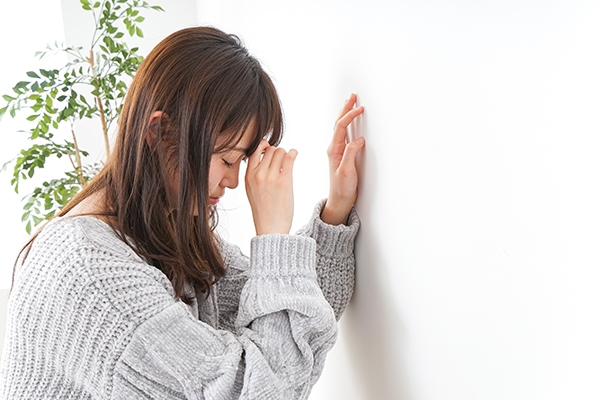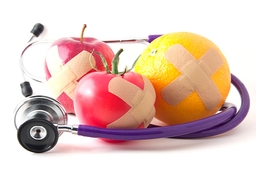Why Anemia Should Not Be Underestimated

Fatigue—feeling too tired from doing activities—is the most visible symptom of anemia. Have you ever experienced it? Let's find out more about the various symptoms of anemia and how to overcome them.
Anemia is a disorder in which the body cannot or does not create enough healthy red blood cells, which transport oxygen from the lungs to all other organs. This insufficient quantity of healthy red blood cells, or hemoglobin, deprives the body of oxygen. As a result, we may feel weak, weary, lethargic, sleepy, or have difficulty concentrating.
Anemia is frequently overlooked because it affects practically everyone. Thus, anemia is a major global public health issue. Women are more likely than men to suffer from anemia. Anemia primarily affects menstruating kids and teens, as well as pregnant and postpartum women.
Anemia affects 40% of infants aged 6–59 months, 37% of pregnant women, and 30% of women aged 15–49 years worldwide, according to the WHO. West Africa, Central Asia, and Central Africa are the three largest contributors to anemia.
Anemia will cause a variety of health concerns if left untreated.
- Late growth and development in youngsters.
- Fatigue, as well as reduced work capacity and productivity. In more severe cases, anemia prevents people from carrying out their everyday tasks.
- Severe anemia in pregnant women can lead to premature birth.
- Severe anemia in the elderly can lead to low oxygen levels in important organs such as the heart. This disorder can result in cardiac failure.
What are the symptoms?
A person who has anemia usually feels several symptoms, such as:
- unusual fatigue and tiredness;
- headache or dizziness;
- difficulty concentrating or thinking;
- easy to get angry;
- loss of appetite; and
- numbness and tingling in the hands and feet.
If left unchecked, anemia will get worse. Severe anemia has signs, such as:
- blue color on the whites of the eyes;
- brittle nails;
- irregular heartbeat, such as skipping;
- hearing a hissing sound that comes and goes;
- pale skin tone;
- shortness of breath on light exertion or even at rest;
- sore or inflamed tongue;
- sores in the mouth;
- abnormal or increased menstrual bleeding; and
- loss of sexual desire in men.
What causes anemia?
The most prevalent type of anemia is iron-deficiency anemia, which is caused by a lack of dietary intake (vitamins, minerals, and nutrients).
Consider your iron, vitamin B12, and folic acid intake! However, there are some factors that can cause the body to have difficulties absorbing nutrition, resulting in anemia. For example, changes in the lining of the stomach or intestines that impact how well nutrients are absorbed, bad diets, and surgery that eliminates part of the stomach or intestines.
Furthermore, the effects of certain medications used to treat long-term conditions such as chronic kidney disease or cancer may cause anemia.
Anemia can also occur as a result of excessive blood loss. It is also usually caused by using certain medications (aspirin or ibuprofen), heavy menstruation, or following surgery.
Anemia can also be caused by a weakened immune system or the presence of toxins in the body.
How can I treat anemia?
Some types of anemia are unavoidable. If the symptoms of anemia begin to annoy you, you should see a doctor. Typically, the doctor will examine you to see whether your anemia is the result of a poor diet or a more serious health problem.
Your doctor may advise you to adjust your diet or take supplements if you have iron deficiency anemia. For instance,
1. Iron-rich foods

Iron can be found in beef and other forms of meat, beans, lentils, iron-fortified cereals, dark green leafy vegetables, and dried fruit.
2. High-folate foods

Fruits and fruit juices, dark green leafy vegetables, green beans, kidney beans, peanuts, bakery items, cereals, pasta, and rice all contain folic acid.
3. The vitamins B12 and C

Meat, dairy products, cereal, and soy products are high in vitamin B-12. Meanwhile, vitamin C can be obtained through fruits like oranges, melons, and strawberries, as well as vegetables like broccoli and tomatoes. These foods help with iron absorption.
4. Limit the consumption of coffee or tea with meals
Drinking coffee or tea with meals will reduce iron absorption.

5. Drink enough water to stay hydrated

6. Regular exercise

If a healthy diet is not enough to improve the condition of anemia, the doctor may provide treatment, such as carrying out blood transfusions or other drugs to suppress the immune system and drugs to help the bone marrow make more blood cells.
A variety of tests are performed by the doctor to determine the presence of anemia. One of these is a complete blood count test, which calculates the number of red blood cells in the blood (hematocrit) and hemoglobin.
Adult hematocrit levels range from 40%-52% in males to 35%-47% in females. Meanwhile, mature males have hemoglobin levels of 14-18 g/dL, while females have levels of 12-16 g/dL.
If your anemia worsens, see your doctor right away to get the correct treatment. Remember to always keep a healthy diet and lifestyle. If you have anemic symptoms or if your situation worsens, click on WhatsApp or visit GWS Medika Clinic, health clinic in Jakarta.



